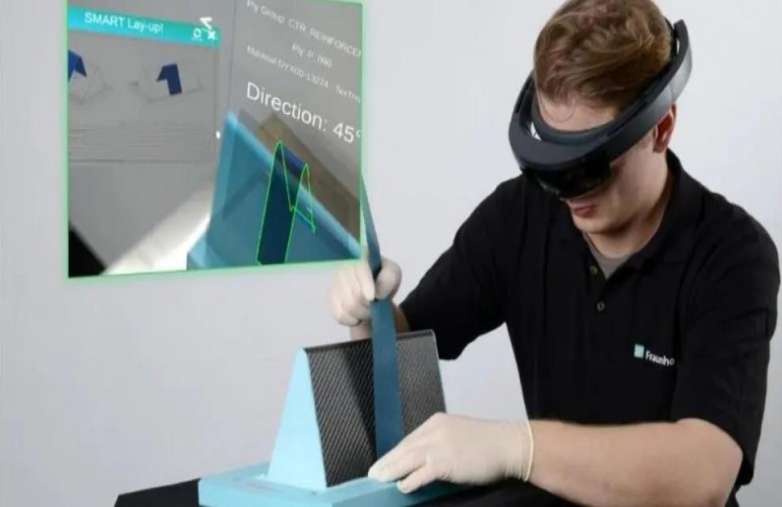8 Mar, 2020 By Johny 2 Comments
Cool!!!FRP manufacturing is also used in the manufacture of AR glasses.
The manufacturing of composite materials (FRP/Fiber Reinforced Plastic) products still inevitably requires manual steps. For example, the position and direction of the semi-finished fiber-reinforced composite materials(FRP) need to be accurately positioned by hand to ensure that the products have the required structural stability and stability after lamination and curing,flexibility. In the end, this became the only way for users to take full advantage of FRP materials. In order to make manual positioning easier, the Fraunhofer IPT in Aachen, Germany, has developed practical software for commercial augmented reality (AR) glasses. This system can correct the correctness of semi-finished materials. Positioning indicates the virtual position of the mold, thereby significantly improving the quality and performance of the FRP product production process.

When the FRP semi-finished product is suspended during the manufacturing or maintenance of composite parts, the position and orientation information of the fiber layer often needs to be referred to the text description in the manual. In particular, small and medium-sized enterprises usually operate according to instructions, and are highly dependent on the operating experience of workers. For large companies in the aerospace field, laser projection systems have long been used to locate semi-finished products on molds. The laser positioning method can indeed help the operator determine the approximate placement of the semi-finished product, but the laser positioning system is relatively expensive and lacks application flexibility.
Fraunhofer IPT has recently developed a new method that can effectively replace manual and laser positioning, which is part of the results of the “Smart-Lay-Up!” Project. AR software for commercial smart glasses can present the precise position and orientation of semi-finished materials directly on the part. The projection of the target contour in AR glasses also supports the cutting process of semi-finished materials. Compared with the traditional manual operation and the use of laser positioning systems, the new method is more flexible in operation, more economical, and can be scaled up in the production environment, which is suitable for the mass production of FRP products.
The new technology does not only provide an electronic version of the operating instructions for workers. It can also present the position where the fiber fabric or prepreg should be placed directly on the component in an augmented reality environment. The operation instructions will guide the workers to gradually perform the preforming operation. In order to ensure the quality, the operation process can also be recorded when necessary.
The software can be easily installed under the Android operating system as an APP, which is suitable for performing manual laying operations. Companies wishing to try the technology can first test the feasibility of the app and work with Fraunhofer IPT researchers to determine the required technical parameters.
Researchers predict that the new technology will improve the accuracy and traceability of FRP component manufacturing, reduce the error rate, and shorten the process cycle. The price of the smart glasses system required is less than one-tenth of that of the laser system, which can be afforded by small and medium-sized enterprises. It will not only significantly increase productivity in the fields of medical technology, boat construction, mechanical engineering, etc., but also FRP in the high-end consumer goods market. The field of product manufacturing is equally promising.
Sourcing from cnfrp.com

